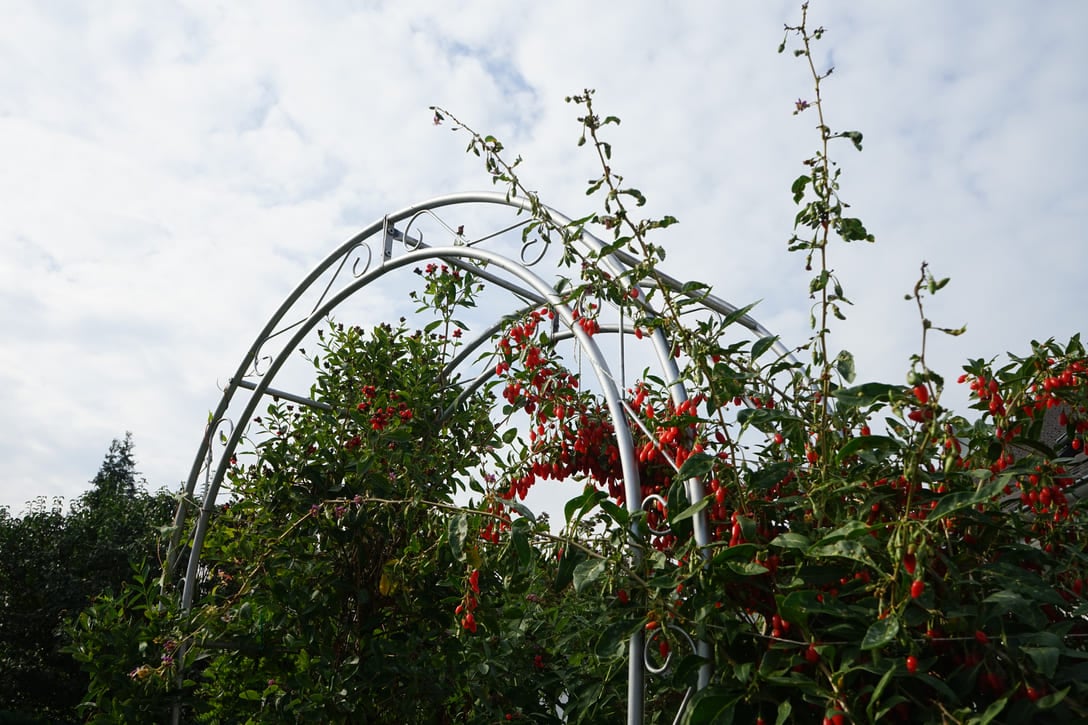Lycium barbarum (F)
Duke of Argyll's tea tree
A scrambling, deciduous shrub to 3m tall, with sparsely spiny stems bearing narrow, dull green leaves and small, dull purple flowers in late spring and summer. These are followed by edible, orange-red berries often known as goji berries. Image credit: Shutterstock
Other common names
Barbary box thornBarbary wolfberry
see moreChinese box thorn
common matrimony vine
Tibetan goji berry
vicar's tea party
European box thorn
Synonyms
Lycium europaeum misappliedLycium halimifolium
Size
Ultimate height
2.5–4 metresTime to ultimate height
5–10 yearsUltimate spread
2.5–4 metresGrowing conditions
Moisture
Moist but well–drained, Well–drainedpH
Acid, Neutral, AlkalineColour & scent
| Stem | Flower | Foliage | Fruit | |
| Spring | Purple | Green | ||
|---|---|---|---|---|
| Summer | Purple | Green | ||
| Autumn | Green | Orange Red | ||
| Winter |
Position
- Full sun
Aspect
West–facing or South–facing
Exposure
Exposed or Sheltered Hardiness
H5Botanical details
- Family
- Solanaceae
- Native to GB / Ireland
- No
- Foliage
- Deciduous
- Habit
- Bushy
- Genus
Lycium can be deciduous or evergreen shrubs, sometimes scrambling, with simple entire leaves and small funnel-shaped flowers followed by red berries
- Name status
Correct
- Plant range
- Europe to China
How to grow
Cultivation
Plant in free-draining soil enriched with well-rotted manure or garden compost and, ideally, train against a wall or fence for maximum fruiting. Tolerates light shade but fruits best in full sun. For more information see Goji berry cultivation for further advice
Propagation
Propagate by seed indoors in spring. Take hardwood cuttings in winter or softwood cuttings in early summer. Layer plants in autumn or lift and replant suckers in late winter
Suggested planting locations and garden types
- Cottage and informal garden
- Coastal
- Hedging and screens
- Banks and slopes
- Edible fruit
- Climber and wall shrubs
- Wall side borders
Pruning
If grown for fruit, prune lightly in early spring removing some of the oldest wood and shortening overlong shoots back to a lower branch. Can be cut back hard to rejuvenate if necessary. Pruning group 1 for ornamental use. Cut hedges back hard in spring or trim in early summer
Pests
May be susceptible to aphids and fruit may require netting to prevent birds from consuming them
Diseases
May be susceptible to powdery mildews
Love gardening
Sign up to receive regular gardening tips, inspiration, offers and more
View our Privacy Policy
Get involved
The Royal Horticultural Society is the UK’s leading gardening charity. We aim to enrich everyone’s life through plants, and make the UK a greener and more beautiful place.

